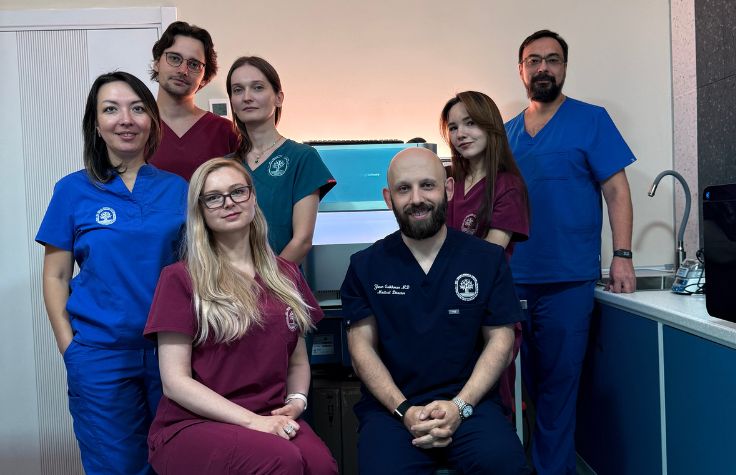SAN DIEGO, Jan 12, 2010 (BUSINESS WIRE) -- Illumina, Inc. (NASDAQ:ILMN) today unveiled the HiSeq 2000 sequencing system, setting a new standard in sequencing output, ease of use and cost effectiveness. At launch, HiSeq 2000 initially generates two billion paired-end reads and 200 gigabases (Gb) of quality filtered data in a single run. The sequencer allows researchers to obtain 30-fold coverage of two human genomes in a single run.
"The HiSeq 2000 delivers on the original vision of combining Illumina and Solexa's strengths in sequencing-by-synthesis (SBS) chemistry and state-of-the-art optical and system design," said Jay Flatley, president and CEO of Illumina. "These innovations redefine the trajectory of sequencing and, for the first time, take the cost of sequencing a human genome below $10,000."
The HiSeq 2000 enables the following:
- Unprecedented Output--HiSeq 2000 is capable of generating 200 Gb of data per run and 25 Gb of data per day. The system uses two flow cells and an innovative dual-surface imaging method, enabling new levels of sequencing output as well as experimental flexibility.
- Breakthrough User Experience--HiSeq 2000 offers the most streamlined and intuitive single operator workflow; initiating a run requires less than 10 minutes total hands-on time. Pre-configured plug-and-play reagents, a touch screen user interface, and real-time and remote run monitoring result in simpler instrument operation. Automation-friendly 96-sample parallel processing for library prep results in a significant reduction in hands-on time and overall cost.
- Unmatched Cost-Effective Operation-- Researchers can sequence two human genomes at 30-fold coverage for less than $10,000 per genome. HiSeq 2000 can be run in single or dual flow cell mode and can simultaneously run applications that require different read lengths.
The high output, ease of use, and cost effectiveness of HiSeq 2000 have the potential to transform the way sequencing experiments are conceived and performed. In particular, the system offers significant benefits for gene expression and epigenetic profiling compared to microarrays. Using the HiSeq 2000 platform, researchers will be able to generate richer transcript profiles with cost and throughput comparable to microarrays. In a single two-day run, researchers can perform gene expression profiling on 200 samples for less than $200 per sample, including library prep. "HiSeq will have a major impact on a broad range of applications, including advancing our understanding of cancer and other complex genetic diseases. We can now sequence two human genomes in a single run--for example, a tumor and a normal sample--at 30-fold coverage," said David Bentley, vice president and chief scientist at Illumina. "The unprecedented output and cost-effective operation will make human genome sequencing routine and allow researchers to easily compare entire genomes, transcriptomes, and epigenomes."
The HiSeq 2000 sequencing system is expected to begin shipping in limited quantities to selected sites in February 2009, and expected to ship broadly in March. Illumina will continue the development, manufacture, and sale of the Genome Analyzer system alongside HiSeq 2000 so that researchers have a range of options to fit their research needs. For more information on Illumina HiSeq 2000, please visit http://www.illumina.com/HiSeq2000.
About Illumina
Illumina (http://www.illumina.com) is a leading developer, manufacturer, and marketer of next-generation life-science tools and integrated systems for the analysis of genetic variation and biological function. Using our proprietary technologies, we provide a comprehensive line of products and services that currently serve the sequencing, genotyping, and gene expression markets, and we expect to enter the market for molecular diagnostics. Our customers include leading genomic research centers, pharmaceutical companies, academic institutions, clinical research organizations, and biotechnology companies. Our tools provide researchers around the world with the performance, throughput, cost effectiveness, and flexibility necessary to perform the billions of genetic tests needed to extract valuable medical information from advances in genomics and proteomics. We believe this information will enable researchers to correlate genetic variation and biological function, which will enhance drug discovery and clinical research, allow diseases to be detected earlier, and permit better choices of drugs for individual patients.
Forward-Looking Statements
This release contains forward-looking statements that involve risks and uncertainties. Examples of forward-looking statements include, but are not limited to, statements we make regarding the expected shipping dates for the HiSeq 2000. Important factors that could cause actual results to differ materially from those in any forward-looking statements include challenges inherent in new product development and manufacturing and the other factors that are detailed in our filings with the Securities and Exchange Commission, including our most recent filings on Forms 10-K and 10-Q, or in information disclosed in public conference calls, the date and time of which are released beforehand. We undertake no obligation, and do not intend, to update any forward-looking statements after the date of this release.
SOURCE: Illumina, Inc.
Illumina, Inc.
Investors:
Peter J. Fromen, 858-202-4507
Sr. Director, Investor Relations
pfromen@illumina.com
or
Media:
Wilson Grabill, 858-882-6822
Senior Manager, Public Relations
wgrabill@illumina.com


